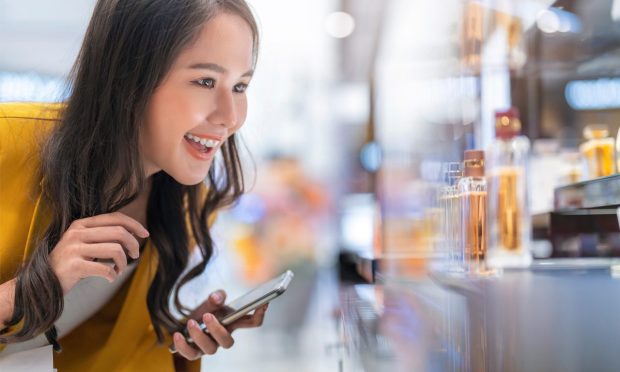Fashion Retailers Embrace Beauty for Connected Shopping Experience

From Stella McCartney launching sustainable beauty to Dries Van Noten and Off-White expanding into makeup or skincare, apparel retailers have increasingly made strategic efforts into the beauty industry, seeing it as a promising avenue for growth.
H&M is the most recent apparel retailer to venture into the beauty industry. The company recently announced the release of a new skincare and body care line named OHH! (Oh Hey Hero), which is designed specifically for Gen Z customers.
The collection includes skincare and body care products such as cleansers, toners, moisturizers and body scrubs, all made with eco-friendly and natural ingredients.
A Slice of the Beauty Pie
H&M’s move into the beauty market is not surprising, as the fashion and beauty industries are closely related, and the global beauty industry market size is set to be worth $571.1 billion in 2023. By expanding into beauty, H&M can tap into a new revenue stream and reach a wider audience.
Additionally, the resilience we’ve seen from the beauty industry during economic downturns is a significant factor that makes it attractive for retailers to expand into this category. This is due to the “lipstick effect,” a theory coined by beauty mogul Leonard A. Lauder, which suggests that beauty sales tend to rise during difficult economic times.
Despite concerns about a potential recession, U.S. prestige beauty sales increased by 15% in 2022, per a Women’s Wear Daily report in late January. And among the sectors, prestige beauty was the only one to achieve double-digit sales growth in units.
Recently, online marketplaces that initially focused on apparel have joined the trend. Farfetch, which acquired specialty retailer Violet Grey, launched its beauty category last year with a selection of over 100 brands. Similarly, Shopbop and Moda Operandi, both owned by Amazon, followed suit by introducing their own beauty offerings.
Going back to 2018, Urban Outfitters unveiled its own private label Ohii, which included an array of products like deodorants, skincare, lipsticks and hairstyling items. Prior to that, the retailer was known to carry a vast range of niche beauty products on its website and in its physical stores since at least 2015, encompassing various categories such as makeup, skincare, hair care and fragrance.
Today, only one Ohii product, a discounted Extractor Tool Duo, is listed on Urban Outfitters’ website, but the retailer has since expanded its inventory to include an even broader selection of external brands which includes Benefit Cosmetics, Anastasia Beverly Hills, Flower Beauty, Maude and Hims, and has a greater emphasis on wellness products.
The Benefits of Beauty
By offering beauty products, apparel retailers can create a more immersive and engaging shopping experience for their customers through a one-stop-shop approach. And with the product expansion, apparel retailers have a chance to offer a sensory in-store experience for customers.
Furthermore, the inclusion of beauty or makeup products in a retailer’s inventory can lead to increased customer spending. For instance, online shoppers may add low-cost beauty items to their cart to meet the free shipping threshold. In physical stores, customers may be enticed to purchase beauty and cosmetic products as gifts or impulse buys.
Although the transition from fashion to beauty is not a new phenomenon, H&M’s strategy with its OHH! line is notable, as it is geared specifically toward Gen Z consumers who prioritize ethical and sustainable beauty products. H&M Beauty has responded to this trend by incorporating natural and sustainable ingredients in their products and utilizing eco-friendly packaging.
H&M has also chosen to stay true to its price point expectations and is honing in a consumer that while not possess the greatest buying power when compared to other groups such as Gen X — who are a smaller cohort but wield a purchasing power of $15 trillion — they are viewed as a worthwhile investment for the future.
H&M has been offering beauty products since the late 1970s, with its private label available in nearly 2,000 stores across more than 50 markets globally. Additionally, external beauty brands are carried in roughly 300 H&M stores. The introduction of new beauty flagship stores will merge H&M’s own branded beauty products with approximately 80 external beauty brands.
As fashion retailers begin to venture into the beauty industry, they are essentially transforming themselves into a one-stop shop or a mini mall of sorts. This strategic move is proving to be a promising avenue for growth, and it will be interesting to see what other developments emerge.
For all PYMNTS retail coverage, subscribe to the daily Retail Newsletter.

